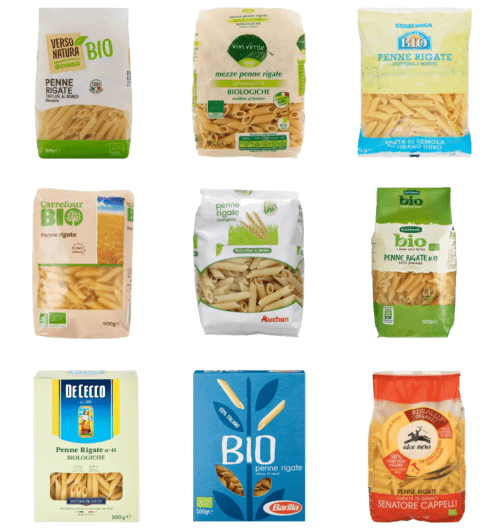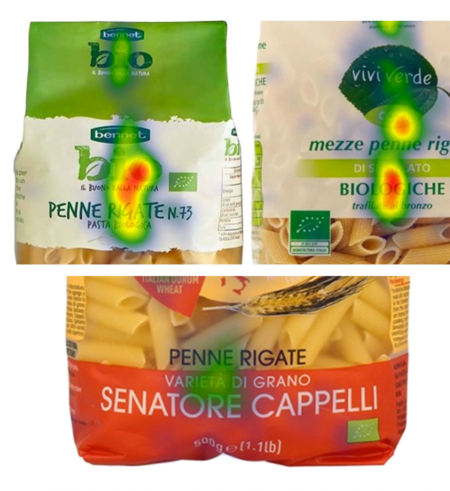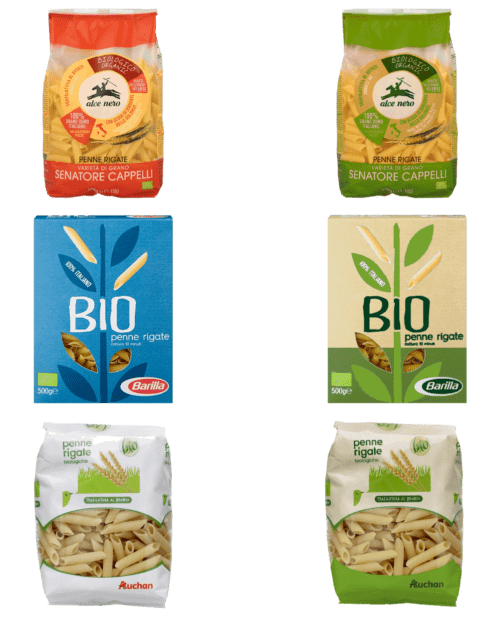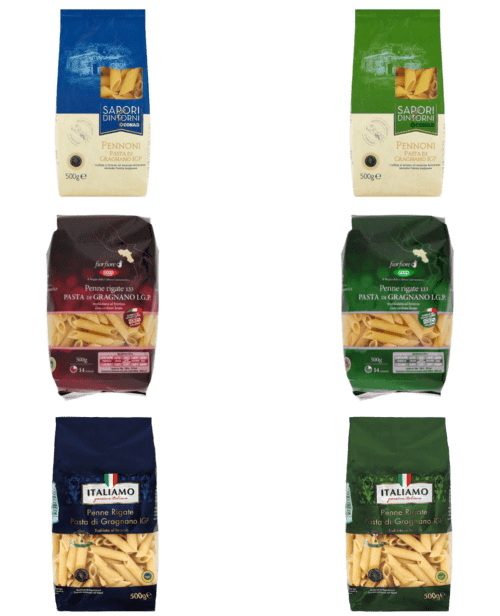Why is the packaging design of a product important in the purchase phase? What influences our decision making process?
To answer these questions, we have chosen to conduct a study on the perception of the concept of organic, starting from the pasta packages sold in supermarkets, inviting people to take part in a test.
The approach that characterizes TSW involves the direct involvement of people (in this case through a test) in order to understand them in depth, revealing opinions and dispositions, and trying to create experiences able to respond to their expectations.
Our study shows how packaging is a key element in determining which wrapping, containing the same type of product, will end up in our cart.
However, our goal is not just to show how a company can create packaging capable of conveying the desired values but also what impact it might have to ignore those that now represent real visual codes.
The decision making process: what happens when we make a decision?
Our brain takes on average 35,000 conscious decisions a day (Sahakian and LaBuzetta, 2013). Approximately an informed choice every 2 seconds. It is clear, newetheless, that primary (more relevant) and secondary (marginal choices) choices exist. For example, a greater effort is expected in the search for solutions to questions such as “I choose whether to invest my savings in Apple stocks” compared to the simpler “I do not know if I will eat a sandwich or a piadina at lunch”.
However, each of these choices, regardless of its impact on our lives, involves an energy expenditure from a cerebral point of view caused by the attempt to foresee all the possible consequences of our decision.
What affects the amount of this energy expenditure is the amount of consequences that are taken into consideration. Thinking of our example, it is obvious that the consequences of having lunch with a sandwich will be less than those you would face by investing your savings.
In our study, secondary choices are taken into consideration: in other words, the sandwich of our lunch (but also the choice of a package of organic pasta at the supermarket as we will see in a few lines).
Mental economy: what our brain does to simplify the decision-making process
In an optimal utopian condition we could process the stimuli entirely, taking all the time necessary to analyze the infinite variables of our possible decisions.
Unfortunately, the large number of decisions we face in everyday life has made this kind of approach impossible, making instead necessary a physiologically sustainable alternative – therefore less expensive – to make the decision-making process faster and easier (to address the issue in a lighter way we recommend two videos on the difference between important and marginal decisions of Sheldon Cooper).
Here is why, then, some evaluations – as in general those related to food – must be carried out according to simplifying models: our brain creates models (expectations) that make the choice easier (Chang and Safety, 2011), even at the cost of total satisfaction.
So we come to the concept of mental economy: the brain adapts and creates maps or mental schemes that generate mental shortcuts to survive.
The greater the coherence between our expectations (and therefore the mental model) and the object of our interest (hence the stimulus), the more likely the decision will be and the less time it takes to take it.
Not only that, as the Kiani et al. 2014 study shows, the doubts that we will put on the choice (and therefore on the possibility of changing it) will also be minor. To put it another way, the less time we spend to choose, the more confident we will be of the decision taken.
This topic has been gutted and discussed in the scientific field so much to be worth the Nobel prize for economics to Richard Thaler in 2017. But how is this reflected in our daily lives?
Organic products: which pasta packaging communicates best?
We conducted a study on the perception of the concept of organic starting from pasta packages to explain how our choices change according to perception, that is, according to all those mechanisms that (without our knowledge) are called into question when we go shopping at the supermarket.
We have selected 3 Italian brands and 3 international brands of large-scale distribution and 3 major brands in the pasta market that offer the same format of pasta (penne) organic (not integral) and we compared them with 3 other non-organic brands.
Here are the 9 brands of organic pasta analyzed:

We therefore invited people to take part in a test that took into consideration both their implicit and explicit answers (for a detail).
The analysis has led us to understand (among other things) that:
1) When we talk about organic we also stimulate the concept of healthy and Italian. These are themes that are more related to people at the level of mental patterns, even more than the concept of “natural”, which could instead be considered a more correct association of thought than the previous ones. This is a classic example of “cost” of a mental shortcut: it is clear that organic does not necessarily mean Italian; however, a product with a packaging that for example highlights the 100% Italian origin of the raw materials will be recognized more quickly as organic.
2) Although everybody indicates as necessary the Euro-leaf (a symbol that is the only guarantee of respect for organical processes), none of the people who participated in the test focused on the presence of this element in the first 3 seconds of interaction with the pasta package. In other words, nobody has tried (or actively sought) what is considered to be the only real indicator of “organic” for a product. Below are the heatmaps that highlight it.

3) People use a visual pattern to easily identify organic products. It means that our brain expects the concept of organic to be represented through a particular set of visual chromatic elements. Only later it will analyze the text and symbols on the packaging. A pattern confirmed by the answers provided by people, who immediately identified those with a packaging that best reflected their visual pattern as organic products.
Considering precisely this third point, we then analyzed the packaging that best communicated the organic value and used the visual patterns that characterized them to change the packaging that instead failed to convey the concept with the same immediacy.
Not only: wanting to be sure of having identified a really striking visual pattern, we have also modified the packs of 3 brands that produce non-organic pasta lines. The hypothesis was that if even in this case people had classified the product as organic (despite the writing and symbols say quite different) we will have been able to demonstrate the perceptive importance deriving from the packaging.
Judge for yourself.
Packaging design: the most effective for the perception of the product
The test results show that packaging is a fundamental element in the mental representation of the product. The mere modification of some elements completely changes the perception of a product because it makes it closer to the expectations of a potential customer.
Most choices in a context like that of the supermarket derive from cognitive bias. In our specific case, a packaging that wants to communicate the values of an organic product proves particularly effective if it uses a certain pattern: shades of green, flanked by a shade of beige, to replace white, and the presence of the brand in the version adapted to green.
The presence of the word “Organic” or the presence of the Euro-leaf symbol do not seem to affect the actual perception, but are factors that come into play only when, a strongly determined person, processes information cognitively.
And even if consumers buy “along” consolidated mental patterns, the context continues to influence the purchase experience of a product and the value of a packaging. We need only think of the packaging of the products that we see inside the stores specialized in organic foods or the strong recognition of the packaging of market-leading brands.
With people to improve the quality of their experience
It is clear that in the choices of how to design a packaging there are several relevant elements that are not necessarily related to the product. Our goal, as TSW, is not to judge the work of companies, but to bring the experiences of people and their desires to these decision-making tables. Our goal is to show you how, with people, we can come to offer a service and a product more in line with their expectations.
Only in this way will we be able to improve the quality of their experience day after day, piece by piece. By doing so, the 35,000 conscious decisions a day become much easier to make.

